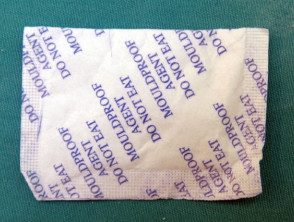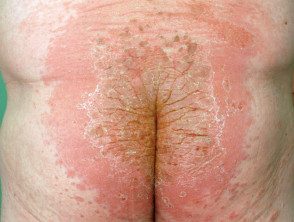What is dimethyl fumarate and where can it be found?
Dimethyl fumarate (DMF) is a powerful allergenic sensitizer that is used for its antifungal properties. It is good to stop mold growth in finished products like leather sofas and shoes. The white lens dust packed in small sachets, similar to silica gel Sachets used to remove moisture. Although silica gel is an inert substance that wicks away moisture, it is not as effective in preventing mold growth on large leather items, hence the use of DMF sachets.
DMF envelopes are stapled to the wooden frame or directly under the leather cover of the sofas. They are also placed directly in packaging such as shoe boxes. Although finished leather articles contain very little moisture and are therefore not prone to mold, the problem arises when these articles are transported between different climates. Confined spaces and damp Environments can lead to moisture buildup and mold growth. DMF's crystalline powder prevents mold growth by evaporating over time. However, during this process it also impregnates the leather goods.
Dimethyl fumarate allergy

Dimethyl fumarate sachet
What are the reactions to dimethyl fumarate? allergy?
In individuals allergic to DMF, contact with DMF produces classic allergic contact. dermatitis. In high enough concentrations it can also cause irritating contact dermatitis. The skin affected by dermatitis can be severe, red, swollen, scaly and itchy eruption It is often seen on the back of the legs, buttocks, and back of patients who have sat on a sofa contaminated with DMF. Therefore, the condition is commonly known as "sofa dermatitis." Very low DMF levels (<1ppm
In 2006-8 there was an outbreak of furniture-related dermatitis in Finland, the UK and France. In some cases, the rash was quite severe, resembling mycosis fungoides or septic infections (impetigo), and required hospitalization. Extensive research led to the discovery that all patients had purchased leather furniture before developing dermatitis and that all the furniture dates back to a furniture factory in China that used DMF to prevent mold growth.
DMF has also been implicated in foot / shoe dermatitis. In one case, dermatitis started as a acuteabruptly demarcated eczema that exactly matched the contact area of the shoe exposure. The patient had worn a new pair of shoes for approximately 8 hours. The high concentration of DMF produced an irritating contact dermatitis instead of an allergic contact dermatitis.
Dimethyl fumarate contact was declared Allergens of the year 2011 by the American Contact Dermatitis Society (ACDS).
Dimethyl fumarate allergy: sofa dermatitis

Dimethyl fumarate allergy: sofa dermatitis
Am I allergic to dimethyl fumarate?
DMF allergy is diagnosed by performing special allergy tests, i.e. patch tests Concentrations of 0.001 to 0.1% of dimethyl fumarate in petrolatum or in water solution can be used for patch testing. However, due to the high risk of irritating reactions and active sensitization caused by DMF, some researchers have recommended concentrations of 0.003% or 0.005% as the upper limit. DMF is not currently included in most base Patches for patch tests and further studies are required to determine the exact concentration of DMF to be used.
Treatment of allergy to dimethyl fumarate
Confirmation of DMF allergy requires prompt removal of the causative agent and then management as for any acute dermatitis / eczema; this may include treatment with current corticosteroids and emollients. In severe cases, patients can be hospitalized and treated with systemic steroids
What should I do to avoid allergy to dimethyl fumarate?
In the European Union, the use of DMF has been prohibited since 1998. In January 2009, European regulators also banned the import of products containing DMF as a result of severe cases of dermatitis caused by DMF in imported products. However, in the United States and Australasia there is no regulation for products containing dimethyl fumarate.
Recently in Australia there have been reports of DMF envelopes found in imported children's school shoes. Tests by the Fashion and Textile Industries Council showed that 25% of shoes purchased from major retailers contained DMF.
If you are sensitive to DMF, you should clearly avoid any contact with products that may have been contaminated with the substance. Sachets labeled "Mold Inhibitor" or "Anti-Mold" are likely to contain DMF and should not be touched. Envelopes commonly found in shoe boxes or other packaged products, labeled "silica gel," should be handled with caution, as some of these have been found to contain silica gel and DMF, but are labeled only as silica gel sachets.
Items such as shoes that have been in a box with DMF envelopes must be left outdoors for several months before the level of DMF can be considered harmless. Unfortunately, in some shoes, DMF may have been incorporated into the shoe's structure, and evaporation of the DMF to reach safe levels can take years instead of months.
It is difficult to avoid DMF since the products are not identified as containing the substance. Patients and physicians should be aware of DMF allergy if unexplained skin reactions occur, especially if a new piece of furniture or clothing that coincides with dermatitis was recently purchased. your dermatologist You may have more specific advice, especially if you are very sensitive to DMF.
Alternative names for dimethyl fumarate
- Fumaric acid
- Dimethyl ester
- Dimethyl ester of allomalic acid
- Dimethyl (E) -butenedioate
- Methyl fumarate
More information
Formula: C6 6H8OR4 4
CAS number: 624-49-7
Cross reactions:
- fumaric acid acrylates and esters
Appearance: fine white crystalline powder
Sensitizer: dimethyl fumarate
Patch test: 0.001 to 0.1% of dimethyl fumarate in petrolatum or aqueous solution

